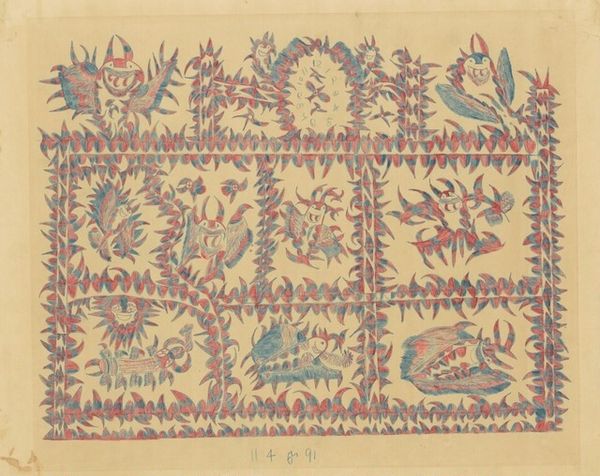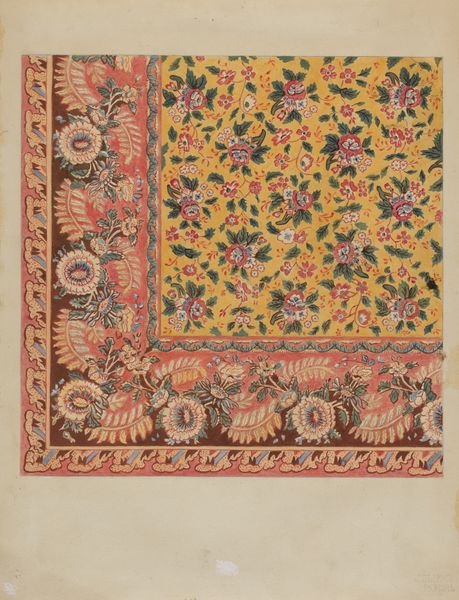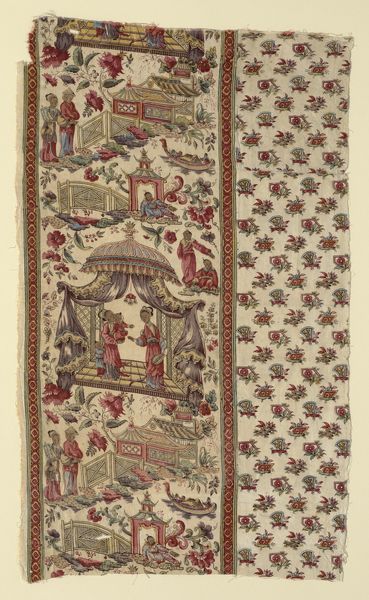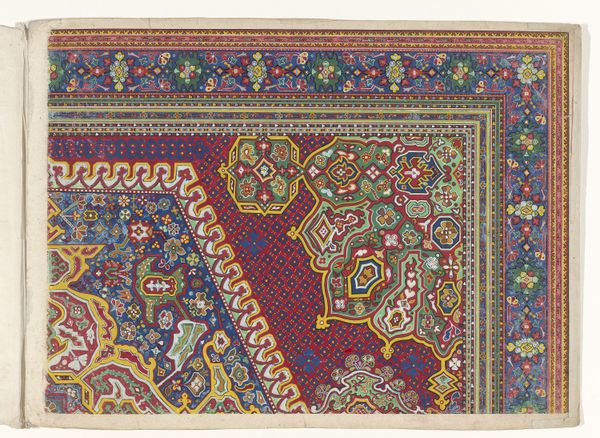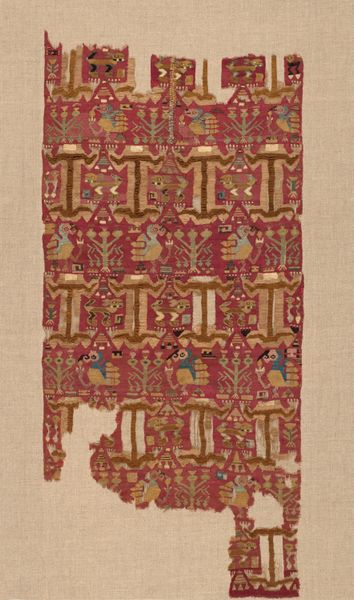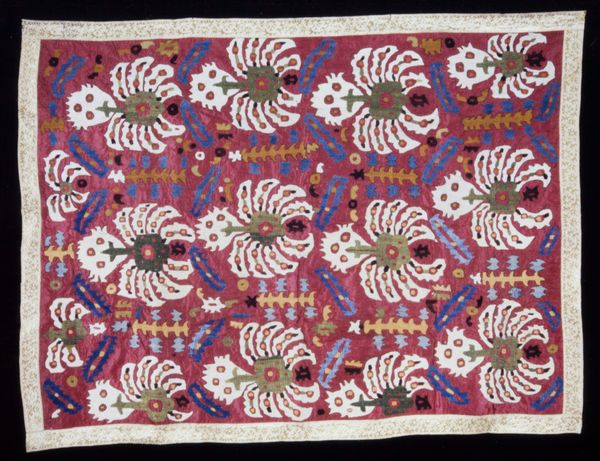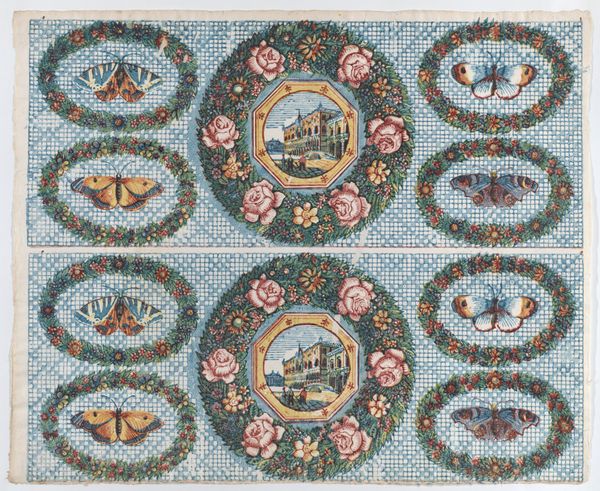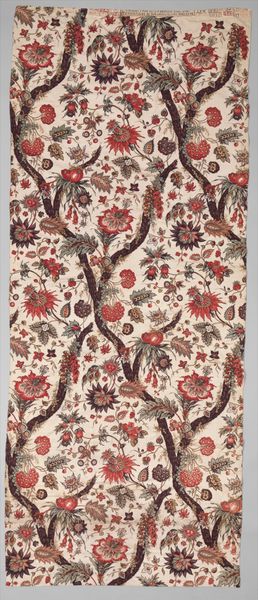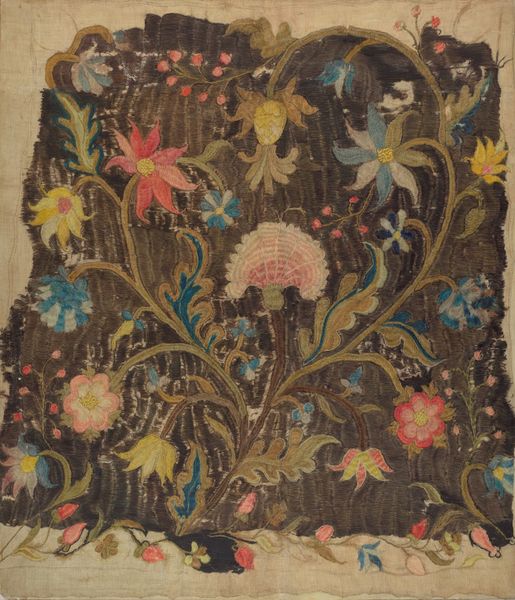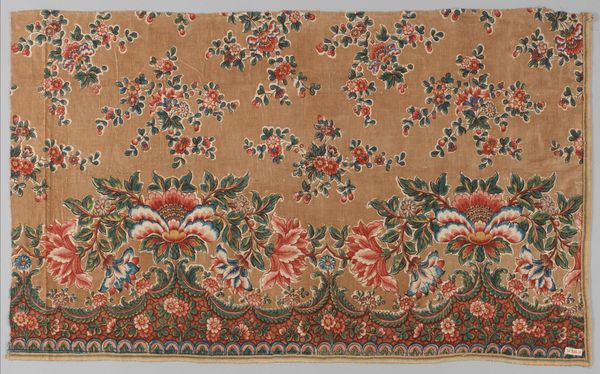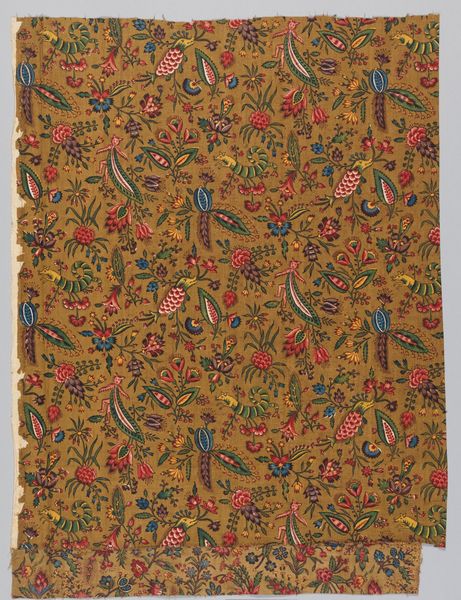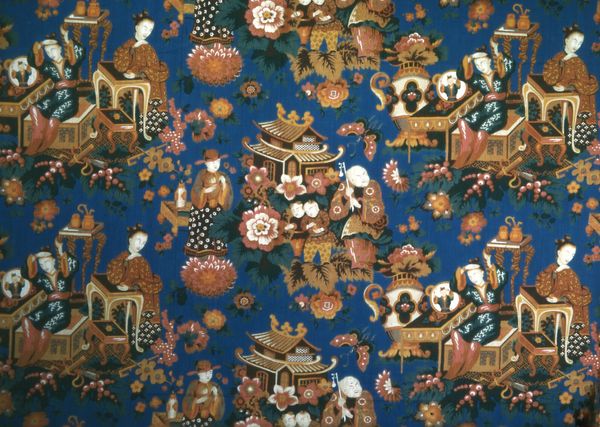
fibre-art, textile
#
fibre-art
#
textile
Dimensions: 41.9 × 49.5 cm (16 1/2 × 19 1/2 in.)
Copyright: Public Domain
Editor: Here we have an artwork titled "Towel or Napkin," created around the 19th century by an anonymous artist. It's a woven textile piece, quite elaborate. I am struck by the repetitive floral and architectural motifs...almost like a formal garden. How do you interpret this work, especially considering its placement within a domestic context? Curator: It’s fascinating how everyday objects can reflect larger societal structures and aspirations. The “Towel or Napkin,” despite its seemingly functional nature, speaks volumes about 19th-century aesthetics and possibly social class. The elaborate weaving transforms the mundane into something almost aspirational. What social norms might the maker and user of this towel have been reacting to? Editor: That's a good question! I wonder if it speaks to the rise of the middle class in the 19th century and their desire to emulate upper-class taste through decorative domestic items. Is the Art Institute categorizing this piece correctly, though? Couldn't we consider it "art," not just craft? Curator: Exactly. The distinction is often socially constructed. Historically, textiles and "craft" were frequently devalued, perceived as women’s work and therefore less significant than "fine art." How does its presence in the museum context now challenge that historical devaluation? Is it working? Editor: Well, presenting it here elevates its status. Placing it on display prompts us to reconsider the artistic skill and cultural value embedded in such objects. It forces us to examine the criteria we use to define art and craftsmanship. Curator: Precisely. It’s a reminder that the art world is not a neutral space, and objects like this "Towel or Napkin" can provoke critical conversations about art hierarchies and the politics of display. What assumptions do viewers bring, and how can those be subverted through presentation and dialogue? Editor: I never thought a simple towel could raise so many complex issues about art, gender, and class. Thanks for your insights. It gives me a lot to think about regarding the social implications of art! Curator: Indeed! It highlights that even the most unassuming objects can be powerful conduits for understanding our cultural history. This experience can help sharpen your perspective to think critically about art’s relationship to social power and cultural norms.
Comments
No comments
Be the first to comment and join the conversation on the ultimate creative platform.
